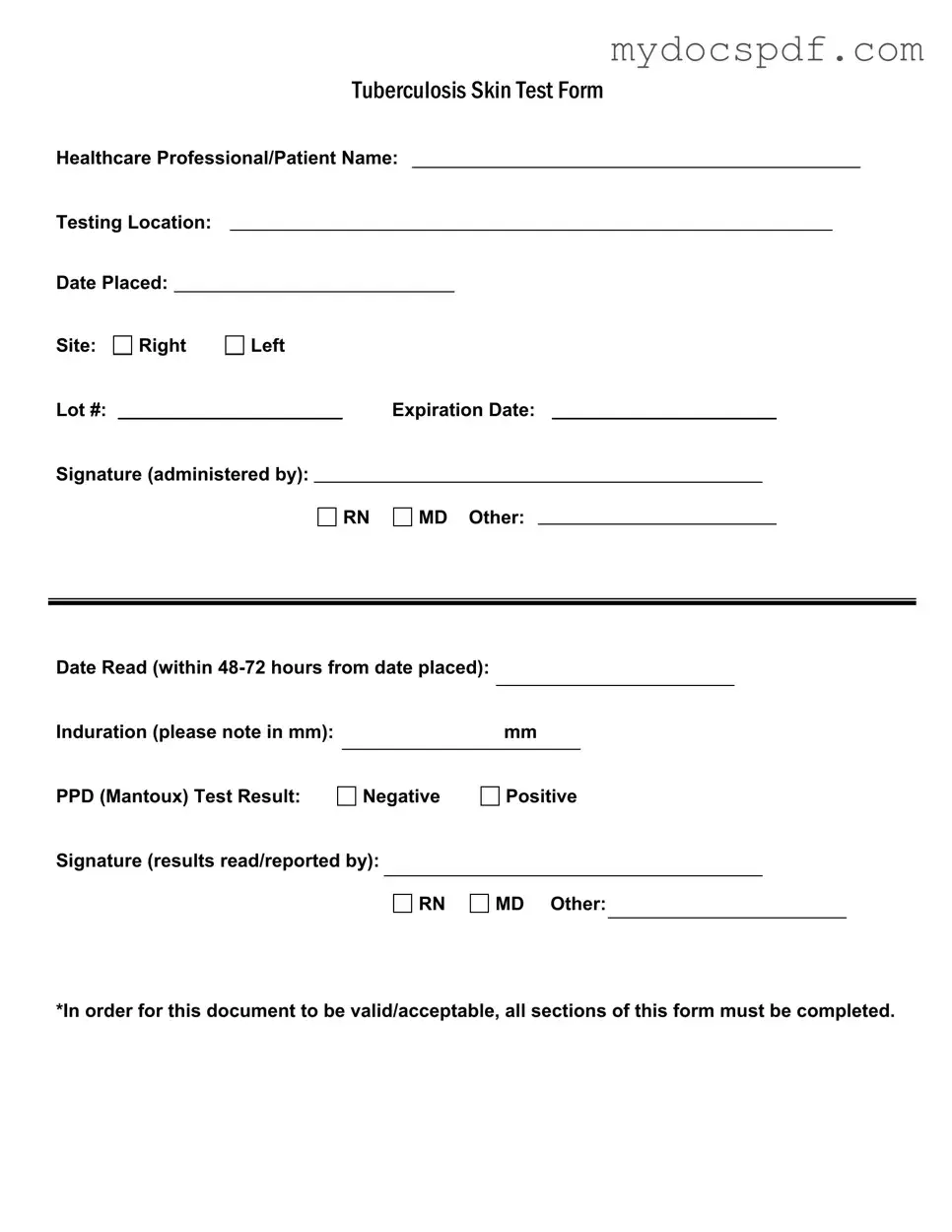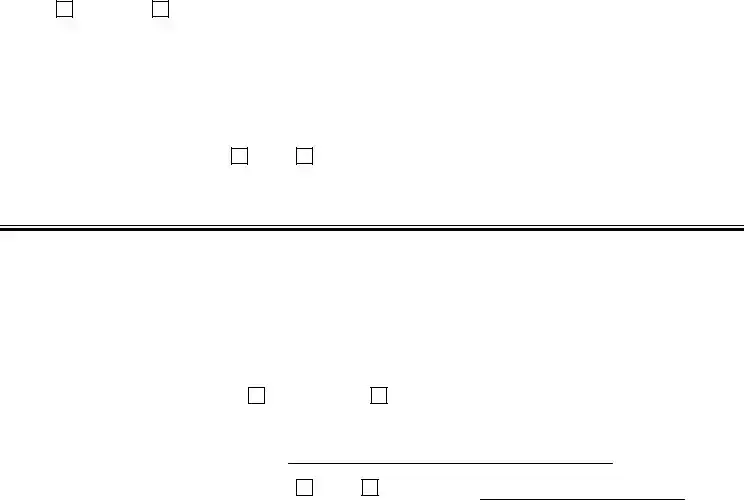When it comes to assessing exposure to tuberculosis, the Tb Test form plays a crucial role in ensuring accurate and reliable results. This essential document captures vital information about the healthcare professional administering the test, as well as the patient being tested. Key details such as the testing location, the date the test was placed, and the site of administration—whether on the right or left arm—are all recorded meticulously. The form also includes specific identifiers like the lot number and expiration date of the testing material, which are important for maintaining the integrity of the test. After the test is administered, it is imperative to read the results within 48 to 72 hours, and this timeframe is noted on the form. The induration, measured in millimeters, provides a quantitative assessment of the test outcome, which can be either negative or positive. To validate the results, signatures from the administering professional and the individual reading the results are required, ensuring accountability at each step. Completing all sections of this form is not just a formality; it is essential for the document to be considered valid and acceptable in medical and legal contexts.

